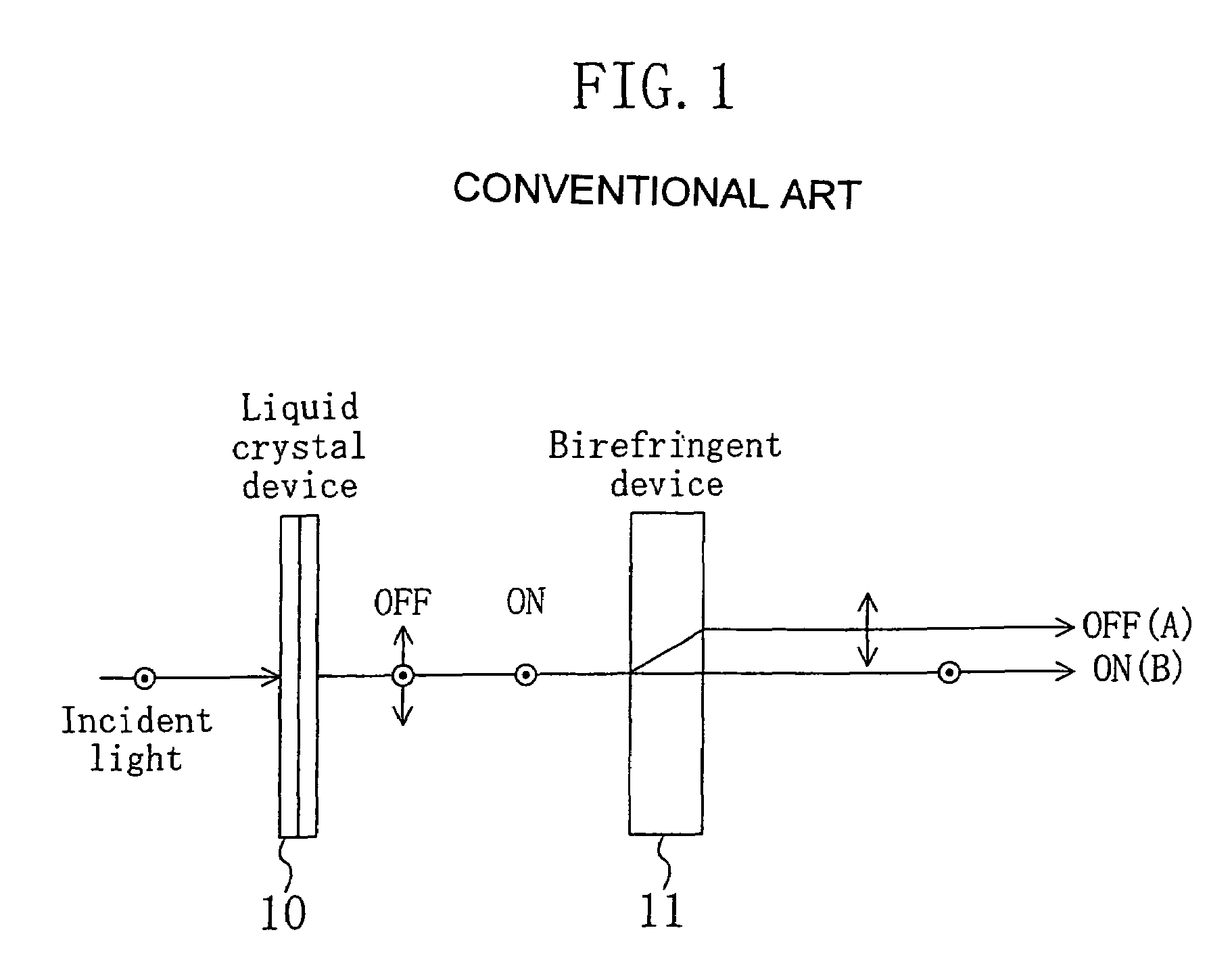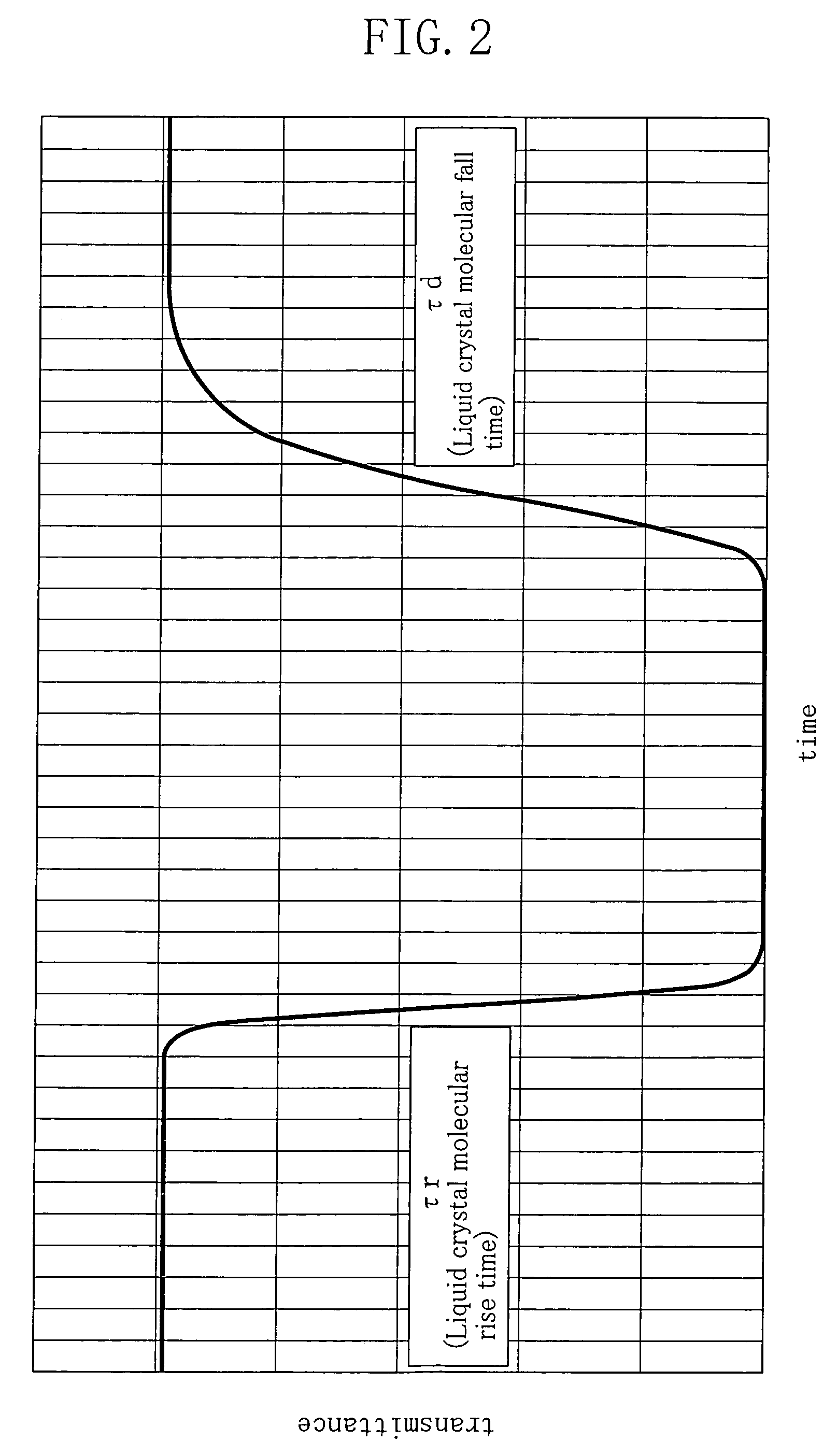Image shifting device, image display, liquid crystal display, and projection image display
a technology of image display and liquid crystal display, which is applied in the direction of color television details, instruments, television systems, etc., can solve the problems of lowering driving power, discharge of charge stored in the corresponding pixel electrode, and lowering contrast ratio, so as to achieve high contrast, increase response speed, and achieve the effect of not increasing driving voltag
- Summary
- Abstract
- Description
- Claims
- Application Information
AI Technical Summary
Benefits of technology
Problems solved by technology
Method used
Image
Examples
embodiment 1
[0134]First, FIG. 3 is referred. FIG. 3 is a schematic diagram of an image display apparatus according to an embodiment of the present invention.
[0135]The image display apparatus of this embodiment shown in the drawing includes a backlight 1, a liquid crystal display device 2, an image shifting device 3 and an observation optical system 4. The backlight 1 is a light source for illuminating the transmission liquid crystal display apparatus 2, and the liquid crystal display device 2 receives a driving signal and a picture signal from a driving circuit 5 and can display an image with a content corresponding to the picture signal. The observation optical system 4 is an optical system for optically enlarging the image displayed by the liquid crystal display device 2. An observer can observe the image displayed by the liquid crystal display apparatus 2 through the image shifting device 3 and the observation optical system 4.
[0136]Although the transmission liquid crystal display device req...
embodiment 2
[0151]Next, an image display apparatus according to another embodiment will be described with reference to FIG. 6.
[0152]In the image display apparatus of this embodiment, light emitted from a light source 501 (light including at least RGB components) is reflected by a parabolic mirror 502 and changed into substantially parallel beam, and then enters a fly eye lens 503. The fly eye lens 503 is used for uniformly illuminating a liquid crystal panel 504. On the outgoing side of the fly eye lens 503, an aperture 505 for regulating the degree of parallelization of the illumination light entering the liquid crystal panel 504 is provided. The aperture 505 has a rectangular opening and its shape is designed in accordance with the shape of a pixel. The light having passed through the aperture 505 passes through a lens 506 and is separated into RGB light by dichroic mirrors 507R, 507G and 507B. The liquid crystal panel 504 is illuminated by the light having been changed into substantially par...
experiment 1
Method for Experiment
[0232]With respect to a liquid crystal display device having the same structure as that of the above-described embodiment, simulation was carried out for examining the relationship between the twist angle θ (°) peculiar to the material of the nematic liquid crystal and the twist angle φ (°) specified by the alignment film.
[0233]In the simulation, parameters of the liquid crystal were set as follows: the dielectric constant ∈|| along the molecular axis direction of the liquid crystal=14; the dielectric constant ∈ along a direction orthogonal to the molecular axis direction=4; the spread elastic coefficient K11=11 (pN); the twist elastic coefficient K22=6 (pN); the bend elastic coefficient K33=13 (pN); and the anisotropic refractive index Δn=0.15 (at a wavelength of 550 nm). Parameters of the liquid crystal display device were set as follows: the cell gap d of the liquid crystal layer=3 (μm); and the pre-tilt angle=3 (°). The polarizing devices were set so as to s...
PUM
| Property | Measurement | Unit |
|---|---|---|
| pre-tilt angle | aaaaa | aaaaa |
| voltage | aaaaa | aaaaa |
| voltage | aaaaa | aaaaa |
Abstract
Description
Claims
Application Information
 Login to View More
Login to View More - R&D
- Intellectual Property
- Life Sciences
- Materials
- Tech Scout
- Unparalleled Data Quality
- Higher Quality Content
- 60% Fewer Hallucinations
Browse by: Latest US Patents, China's latest patents, Technical Efficacy Thesaurus, Application Domain, Technology Topic, Popular Technical Reports.
© 2025 PatSnap. All rights reserved.Legal|Privacy policy|Modern Slavery Act Transparency Statement|Sitemap|About US| Contact US: help@patsnap.com



